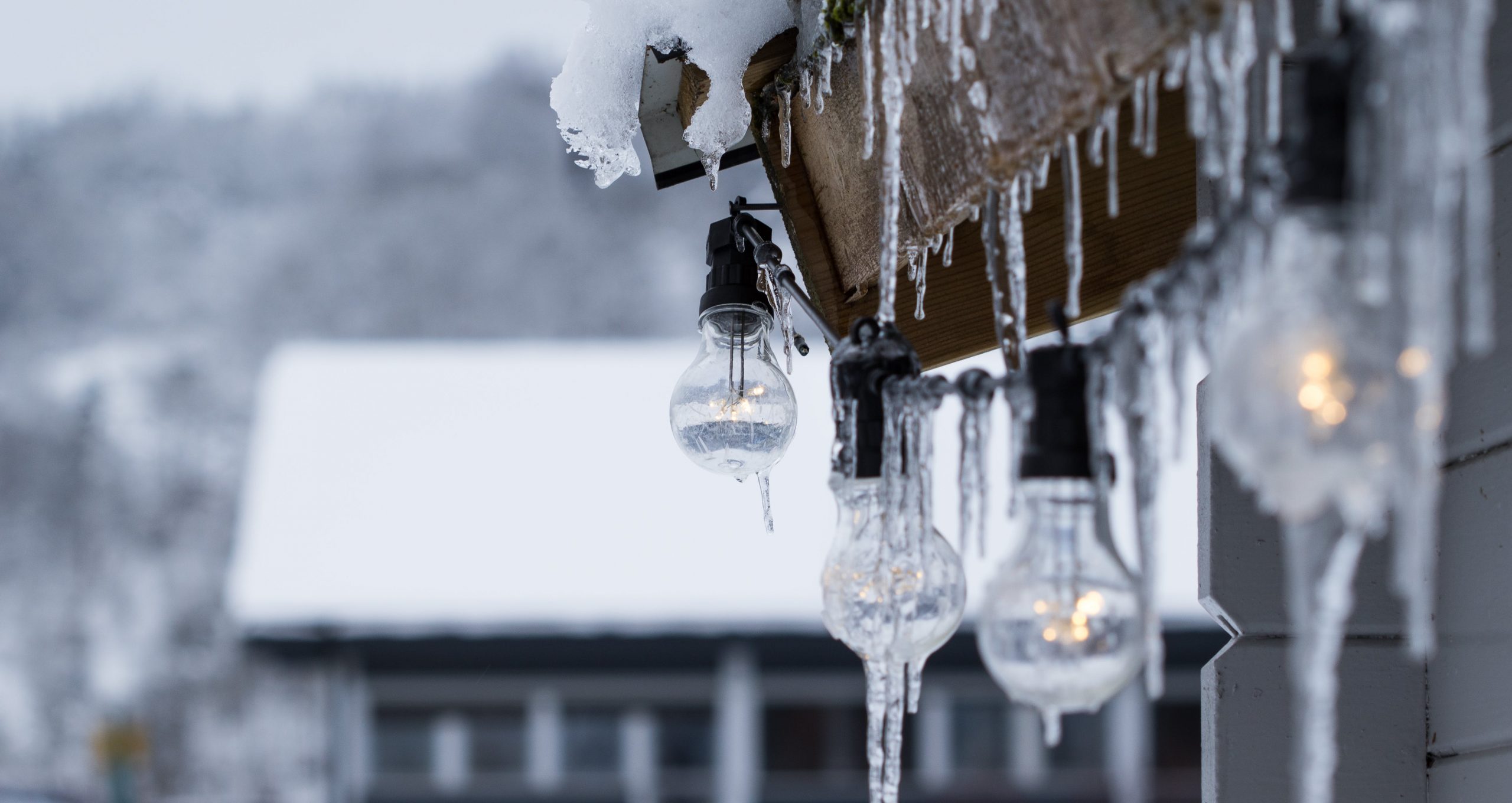Prepping Your House for Winter: Essential Tips for a Cozy and Protected Home

As the colder months approach, preparing your home for winter is key to ensuring it stays warm, safe, and efficient. A few proactive measures can help you avoid potential issues and make your living space more comfortable during the harshest season. Here’s a guide to winter-proofing your home and protecting it from the challenges brought by freezing temperatures and snow.
1. Inspect and Insulate Windows and Doors
Cold air can seep through the smallest gaps, making your heating system work overtime. To keep the chill out:
- Check for Drafts: Run your hand along the edges of windows and doors to feel for cold air. Use caulking or weatherstripping to seal gaps.
- Install Storm Windows: Consider installing storm windows to add an extra barrier against the cold.
- Insulate Curtains: Use thermal or heavy curtains to help retain heat in rooms.
2. Service Your Heating System
Ensure your heating system runs efficiently and reliably by servicing it before the winter chill sets in.
- Schedule a Professional Inspection: Have an HVAC professional inspect and clean your furnace or heating system.
- Change Filters: Replace filters in your furnace or heating unit to improve airflow and efficiency.
- Test Thermostats: Make sure your thermostat is functioning correctly and consider a programmable or smart thermostat to optimize heating times and reduce energy use.
3. Inspect Your Roof and Gutters
Your roof and gutters play a crucial role in protecting your home from winter weather.
- Clear Gutters of Debris: Remove leaves and debris from your gutters to prevent ice dams from forming, which can lead to roof leaks.
- Check for Missing Shingles: Inspect your roof for any loose or missing shingles that could lead to leaks during heavy snow or ice accumulation.
- Install Gutter Guards: Gutter guards can help reduce the amount of debris that accumulates, making maintenance easier.
4. Protect Your Pipes
Frozen pipes can burst, leading to costly water damage. To avoid this:
- Insulate Pipes: Wrap insulation around pipes in unheated areas such as basements, garages, and attics.
- Seal Drafts: Check for drafts near pipes and seal any cracks with expanding foam or caulking.
- Keep a Drip: During particularly cold nights, let faucets drip slightly to prevent freezing.
5. Check Your Chimney and Fireplace
If your home has a wood-burning fireplace, it’s essential to prepare it for safe use.
- Inspect the Chimney: Hire a professional to inspect and clean your chimney to prevent creosote buildup, which can lead to chimney fires.
- Ensure Proper Ventilation: Make sure the damper is functioning correctly and that there are no blockages.
- Stock Up on Wood: If you use your fireplace regularly, have enough seasoned wood ready to keep your home cozy.
6. Weatherproof Outdoor Spaces
Winter can be tough on outdoor spaces, so prepare accordingly.
- Cover Outdoor Furniture: Protect patio furniture and grills with weather-resistant covers or store them in a shed or garage.
- Drain Garden Hoses: Disconnect and drain garden hoses, and turn off outdoor water valves to prevent freezing.
- Seal Cracks in Driveways: Seal any visible cracks in your driveway or walkways to prevent water from seeping in and freezing, which can cause further damage.
7. Stock Up on Essentials
Preparation goes beyond home maintenance; it’s also about making sure you’re ready for whatever winter brings.
- Emergency Kit: Ensure you have an emergency kit with flashlights, batteries, blankets, and first aid supplies in case of power outages.
- Rock Salt and Shovels: Have rock salt or sand on hand to treat icy walkways and driveways, and make sure your snow shovel is in good condition.
- Backup Heating: Consider a space heater or generator as a backup heating option during extended power outages.
Preparing your home for winter involves taking the time to make these important checks and updates. By doing so, you’ll be protecting your investment, reducing your energy bills, and ensuring a warm and comfortable environment for you and your family. These preventive measures can make all the difference when winter weather is at its peak.
Tips for a Tidy, Pet-Friendly Home

Pets bring endless joy to our homes, but they also bring a few extra cleaning challenges. From pet hair on the furniture to paw prints on the floor, keeping your home clean can feel like a never-ending battle. With a few helpful strategies, you can enjoy a tidy home without sacrificing quality time with your furry friends. Here’s how:
1. Establish a Regular Grooming Routine
One of the best ways to reduce the amount of hair and dander in your home is to groom your pet regularly. For dogs and cats, brushing them a few times a week can help reduce shedding. Regular grooming also helps reduce dirt and debris that can be tracked inside.
2. Keep Pet Cleaning Supplies Handy
Keep a designated area stocked with pet-safe cleaning supplies like lint rollers, stain removers, and a hand vacuum. Having these essentials nearby makes it easier to tackle any accidents, spills, or shed fur before they get out of control.
3. Invest in Pet-Friendly Furniture
Pet-friendly furniture made from materials that resist stains and are easy to clean is a game-changer. Leather and microfiber are generally great options for homes with pets, as these materials are resistant to stains, hair, and odours. Slipcovers for couches can also provide an extra layer of protection and can be washed as needed.
4. Manage Muddy Paws
Place washable doormats at all entrances, and keep a towel handy to wipe your pet’s paws before they come indoors. Some pet owners even set up a paw-washing station with a shallow basin of water and a towel nearby, especially helpful for rainy or snowy days.
5. Use an Air Purifier
Pet dander and odour can easily accumulate over time. An air purifier helps keep the air fresh and reduces allergens. Look for models with HEPA filters, which can trap pet dander, hair, and dust particles.
6. Vacuum Frequently
Invest in a vacuum cleaner specifically designed for homes with pets. Look for one with strong suction and an attachment for pet hair, especially if you have carpets or area rugs. Try to vacuum at least twice a week (or daily if you have heavy shedders) to keep hair and dander under control.
7. Set Up a Pet-Friendly Zone
Create a designated space in your home for your pet to lounge. You can add a comfy bed, toys, and even a blanket they’re allowed to snuggle with. Having this area can help contain some of the hair and dirt, and you can give this spot extra attention during your cleaning routine.
8. Launder Pet Bedding and Blankets Regularly
Wash pet bedding and blankets every week to reduce hair buildup and odours. Pet-safe laundry detergent can help reduce pet odours while being gentle on your pet’s skin.
9. Maintain Litter Boxes and Pet Toileting Areas
For those with cats, regularly cleaning the litter box is crucial to keeping your home odour-free. Scoop the litter daily and clean the box at least once a week. For dogs, if they use pee pads, change them frequently, and sanitize the area regularly to prevent lingering odours.
10. Use Natural Deodorizers
Sprinkle baking soda on pet beds, carpets, or any area your pet frequents. Baking soda is a safe, natural deodorizer that can help neutralize odours. You can vacuum it up after about 15 minutes for a fresh-smelling space.
Keeping a clean home with pets doesn’t have to be overwhelming. With a regular routine and some simple tools, you can enjoy a clean, comfortable, and pet-friendly space where both you and your pets feel at home.
Last-Minute Halloween Costumes for Kids

If Halloween snuck up on you this year, you’re not alone! When life is busy, planning a costume can slip to the bottom of the list. But don’t worry – there are plenty of last-minute costume ideas that you can put together using everyday items you might already have at home. Here are some simple, creative, and fun last-minute costume ideas for kids that they’ll be excited to wear!
1. The Classic Ghost
- What You’ll Need: A white sheet and scissors
- How to Create: Simply cut two holes for eyes and drape the sheet over your child. For a twist, use a black fabric marker to draw a friendly or spooky face on the sheet. Tie a rope or belt around the waist to keep it secure if needed. This timeless costume is quick, easy, and always a crowd-pleaser.
2. Rosie the Riveter
- What You’ll Need: Denim shirt, red bandana, and red lipstick
- How to Create: Dress your child in the denim shirt and roll up the sleeves. Tie the red bandana around their head with a knot at the top, and use a dab of red lipstick if they’d like. This empowering costume is simple, recognizable, and great for photos!
3. Mummy
- What You’ll Need: White or beige fabric strips, medical gauze, or even toilet paper
- How to Create: Wrap strips of fabric or gauze around your child’s clothing, securing them with safety pins if needed. For a quick version, wrap toilet paper loosely around them just before they go out trick-or-treating (with backup supplies just in case!). Add dark eyeshadow around the eyes for a spooky effect.
4. Artist
- What You’ll Need: A beret, large shirt or smock, and a paint palette (real or homemade)
- How to Create: Dress your child in an oversized shirt or smock and add a beret if you have one. You can create a paint palette by cutting a piece of cardboard into shape and adding circles of colourful paint or markers. Give them a paintbrush, and they’ll look ready to create a masterpiece!
5. Animal Ears & Tail
- What You’ll Need: Headband, construction paper, and face paint
- How to Create: Choose an animal, such as a cat, bunny, or bear. Cut ears out of construction paper and attach them to a headband. Use eyeliner or face paint to draw whiskers or a nose. If you have extra fabric or felt, create a tail to pin onto their pants. Simple yet adorable!
6. Detective
- What You’ll Need: A trench coat, magnifying glass, and a hat
- How to Create: Dress your child in a trench coat and add a hat if you have one. Hand them a magnifying glass, and they’re ready to solve mysteries all night! You can also make a “detective’s notebook” with clues for them to write in throughout the night.
7. Scarecrow
- What You’ll Need: Flannel shirt, jeans, hat, and face paint
- How to Create: Dress your child in a flannel shirt, jeans, and add a hat. Use face paint or eyeliner to draw a triangle nose and stitches on their cheeks and mouth. Add some straw or raffia around their sleeves and pants for an extra touch. This cute costume is comfortable and classic!
8. Robot
- What You’ll Need: Cardboard boxes, aluminum foil, and markers
- How to Create: Cover a small box with aluminum foil for a helmet and cut out holes for eyes. Cover a larger box for the body, decorating it with drawn-on buttons and dials. Dress your child in grey underneath, and they’re ready to beep and boop through the neighbourhood!
9. Superhero of Their Own Design
- What You’ll Need: A cape (or blanket), mask (optional), and their favourite clothes
- How to Create: If your child has a favourite character or superpower in mind, let them design their own superhero costume! Use a blanket as a cape, and fashion a simple mask with construction paper or fabric. Add some “power bracelets” made from tinfoil or paper. Let their imagination take the lead.
10. Static Cling
- What You’ll Need: Dark-coloured clothes, safety pins, and small laundry items
- How to Create: Dress your child in dark clothes, then pin socks, small towels, or even fabric softener sheets randomly on them to create a “static cling” effect. This silly costume is quick to assemble and sure to get some laughs.
Tips for Putting Together Last-Minute Costumes
- Check your closet and craft supplies: Look for old costumes or items you can repurpose.
- Keep it simple: Sometimes, the easiest costumes end up being the most memorable.
- Make it fun for your child: Let them have a say, even if it means mixing and matching ideas for a unique look.
Halloween doesn’t have to be stressful, even if it’s last minute. With these quick and easy ideas, your child will be ready for trick-or-treating in no time, looking festive, and feeling fantastic!
Keep Pests Out: Preventative Pest Control for Your Home

As temperatures begin to drop, many pests start looking for a cozy place to spend the winter, and unfortunately, our homes often become their target. Whether it’s mice, spiders, or other critters, they can cause damage, spread disease, and create an uncomfortable living environment. Preventative pest control is key to ensuring your home stays pest-free this season.
Why Pests Are Attracted to Your Home in the Fall
As the weather cools down, pests like mice, cockroaches, ants, and spiders search for warmth, food, and shelter. Cracks, gaps, and openings in your home’s structure can become entry points for these unwelcome guests. Once inside, pests can multiply quickly, leading to infestations that are harder to manage. Mice, in particular, can squeeze through spaces as small as a dime and reproduce rapidly, making them a common problem in colder months.
Steps to Prevent Pests from Entering
- Seal Cracks and Gaps Inspect the exterior of your home for cracks, gaps, or holes. Pay special attention to areas where utilities enter the home, such as pipes, vents, and cables. Use weather-resistant caulking to seal these spaces and install door sweeps to close off gaps under exterior doors.
- Install Screens Ensure that windows, doors, and vents have proper screens in place. If your existing screens are damaged, repair or replace them to prevent pests from getting inside.
- Keep Food and Trash Sealed Pests are often drawn to easy food sources. Make sure food is stored in airtight containers, and take out the garbage regularly. Compost bins should be tightly sealed, and any pet food should be stored indoors.
- Maintain Yard and Garden Areas Keep vegetation, firewood, and mulch away from the foundation of your home. These areas can serve as hiding spots for pests before they make their way inside. Trim back tree branches and shrubs that are touching your home to eliminate easy access routes.
- Eliminate Moisture Sources Pests need water to survive, so address any moisture issues inside your home. Fix leaking pipes, ensure proper drainage around your home’s foundation, and use a dehumidifier in damp areas like basements.
Special Focus: Dealing with Mice in the Fall
Mice are notorious for making their way into homes during fall and winter. They can chew through wires, insulation, and even furniture, posing both a health and fire hazard. Here’s how to protect your home from these sneaky rodents:
- Set up Traps: Place traps in areas where you suspect mice activity, especially along walls, behind appliances, and in basements or attics.
- Use Natural Repellents: Strong-smelling substances like peppermint oil, cayenne pepper, or vinegar can deter mice. Soak cotton balls in these substances and place them near entry points.
- Declutter Storage Spaces: Mice love hiding in cluttered spaces like attics, garages, and basements. Keep these areas organized and limit cardboard boxes, which they love to chew on.
When to Call a Professional
Despite your best efforts, sometimes an infestation can still occur. If you notice signs like droppings, gnaw marks, or hear scratching noises in your walls, it’s time to call a pest control professional. Regular inspections and treatments can ensure that your home stays protected year-round.
Taking the time to implement preventative pest control measures now can save you the hassle of dealing with an infestation later in the season. By keeping pests out of your home, you’ll enjoy a safer, cleaner, and more comfortable space throughout the fall and winter months.
Fireplace and Chimney Maintenance Tips for Cold Weather Season

As the days grow shorter and the chill of Fall creeps in, many homeowners start turning to their fireplaces for warmth and comfort. Before lighting that first cozy fire of the season, it’s crucial to ensure your fireplace and chimney are in top shape. Regular maintenance not only improves efficiency but also ensures the safety of your home and family. Here are some key fireplace and chimney maintenance tips to keep in mind as we head into the colder months.
1. Schedule a Professional Chimney Inspection
Before using your fireplace, it’s important to have your chimney professionally inspected and cleaned. A certified chimney sweep can check for blockages, creosote buildup, and any structural damage that could pose a fire risk. Creosote is a byproduct of burning wood and can accumulate in your chimney over time. If not removed, it can lead to dangerous chimney fires.
Tip: Experts recommend having your chimney inspected and cleaned at least once a year, ideally before the start of the cold season.
2. Check for Cracks and Leaks
Cracks in the chimney or flue can allow smoke, carbon monoxide, or even flames to escape into your home. During your inspection, have your chimney sweep check for any signs of deterioration or damage, especially if your chimney is older or has been exposed to harsh weather conditions.
Tip: Chimney caps help protect your chimney from water damage, debris, and even animals that may seek shelter in colder months.
3. Clean Out the Firebox
The firebox, where the fire burns, should be cleaned regularly to remove ash and debris. A buildup of ash can reduce the efficiency of your fireplace and make it more difficult to start a fire. However, leaving a small layer of ash (about an inch) can help insulate the next fire and make it easier to light.
Tip: Always wait at least 24 hours after the last fire before cleaning out the ash to ensure it has fully cooled.
4. Use the Right Firewood
Choosing the right type of wood for your fireplace is essential for both safety and efficiency. Seasoned hardwoods, like oak or maple, are ideal because they burn hotter and cleaner than softwoods. Wet or green wood, on the other hand, can create more creosote buildup and produce more smoke, making your fireplace less efficient and more hazardous.
Tip: Split your wood and let it dry for at least six months before burning. A moisture content of 20% or less is ideal for firewood.
5. Check Smoke and Carbon Monoxide Detectors
Fireplaces can produce carbon monoxide, which is an odourless, invisible gas that can be deadly. Ensure that your smoke and carbon monoxide detectors are functioning properly and have fresh batteries. This is an essential step for keeping your home safe throughout the heating season.
Tip: Test your detectors once a month and replace the batteries at least twice a year, or whenever the unit indicates low battery.
6. Check Your Damper
The damper is the metal plate inside your chimney that controls airflow. It should be fully open when you start a fire to allow smoke to escape. Over time, dampers can become stuck or damaged, so it’s important to check that yours opens and closes properly.
Tip: Close the damper when your fireplace is not in use to prevent warm air from escaping your home.
7. Install Glass Doors or Screens
Glass doors or mesh screens can be added to your fireplace to improve safety and efficiency. They help prevent sparks from escaping the firebox and reduce heat loss when the fire isn’t burning.
Tip: For wood-burning fireplaces, use a mesh screen while the fire is burning and close the glass doors once the fire has died down to prevent drafts.
8. Ensure Proper Ventilation
Always make sure your home is properly ventilated when using a fireplace. Open a window slightly to allow fresh air to enter the room, which helps with combustion and prevents carbon monoxide buildup.
By following these fireplace and chimney maintenance tips, you can enjoy a warm and safe home throughout the cold weather season. If you’re unsure about any of the steps above or it’s been more than a year since your last chimney inspection, it’s always a good idea to consult with a local professional. Stay warm, stay safe, and enjoy the cozy comfort of your fireplace this winter!
For more home maintenance tips and real estate advice, check out our other blog posts, or contact Century 21 United for all your real estate needs in Peterborough and the Kawarthas!
Autumn Walks in and Around Peterborough: The Best Spots for Fall Foliage

As the autumn season arrives in Peterborough, Ontario, the landscape comes alive with vibrant hues of red, gold, and orange. Whether you’re looking for a walk in the heart of the city or a short drive to nearby trails, the area offers a wealth of options to immerse yourself in the beauty of fall. Here are just some of the best spots for autumn walks, both within Peterborough and just a quick trip away.
In Peterborough
- Jackson Park Located right in the city, Jackson Park is a local favourite for autumn walks. The park features a network of trails that wind through dense woods, over charming bridges, and along a scenic creek. The trees here burst into colour during the fall, providing a stunning backdrop for your stroll. Be sure to visit the park’s iconic suspension bridge, where the view of the surrounding foliage is breathtaking.
- Peterborough Greenway Trail The Greenway Trail offers a peaceful escape right from the city center. This multi-use trail runs along the Otonabee River and connects Peterborough to Lakefield, making it a perfect choice for those looking for a longer walk or bike ride. In autumn, the trail is lined with golden and crimson leaves, creating a serene atmosphere as you enjoy the sights and sounds of nature. It’s also easily accessible for families and suitable for all fitness levels.
- Nicholls Oval Park For a leisurely walk through a quieter part of the city, Nicholls Oval Park is a beautiful spot to take in fall colours. The park’s paths are shaded by mature trees that turn brilliant shades of orange and yellow in autumn. With open spaces and picnic areas, it’s also a great place for families or anyone looking to enjoy a slower-paced walk.
Just a Short Drive Away
- Wildlife Areas and Nature Reserves For a more rugged experience, consider exploring nearby wildlife areas and nature reserves, such as the Peterborough County Forests or the Trent University Nature Areas. These spots offer various trails through forests, wetlands, and meadows, showcasing the rich biodiversity of the region. As you wander through these natural landscapes, you may encounter local wildlife and stunning views of the changing seasons.
- Mark S. Burnham Provincial Park (10-minute drive east of Peterborough) If you’re looking for a quick nature escape, Mark S. Burnham Provincial Park is a perfect destination. Just a short drive from the city, this forested park is home to some of the oldest trees in the area. The towering maples, oaks, and pines provide a stunning canopy of colour during the fall. The trails are relatively short and easy to navigate, making it a peaceful spot for an afternoon walk among the leaves.
- Lakefield (20-minute drive north of Peterborough) The quaint village of Lakefield offers beautiful autumn scenery along the shores of the Otonabee River. Walk through the town’s charming streets or explore the nearby Lakefield Trail, which offers fantastic views of the river and the surrounding countryside. The combination of water and fall foliage creates a picturesque setting that makes Lakefield a must-visit for an autumn stroll. Grab a coffee from a local café and enjoy the vibrant colours.
- Cavan Monaghan and the Cavan Hills (25-minute drive southwest of Peterborough) For a more rural experience, take a short drive to the Cavan Hills. This area offers a scenic landscape of rolling hills and open farmland, with plenty of spots to pull over and explore on foot. The Cavan Monaghan trail, part of the Trans-Canada Trail system, runs through this region and offers some incredible views, especially in autumn when the hills are covered in a patchwork of red, orange, and gold.
Tips for Your Autumn Walk
- Dress Warmly: Temperatures can fluctuate during fall, so wearing layers will keep you comfortable.
- Pack Snacks: If you’re heading to a more rural trail, bringing water and snacks is a good idea.
- Capture the Moment: Fall is a photographer’s dream, so have your camera or phone ready to capture the stunning views.
- Check Trail Conditions: Some trails may become slippery with fallen leaves, so wear appropriate footwear and check conditions before heading out.
Autumn is one of the most magical times to explore Peterborough and its surrounding areas. Whether you prefer a city walk along the Greenway Trail or a short drive to Lakefield or the Cavan Hills, there are countless opportunities to enjoy the breathtaking fall colours. So, lace up your walking shoes, grab a friend or family member, and make the most of the season’s beauty with these top autumn walk destinations!
Real Estate Market Analysis for September 2024

The real estate market in Peterborough, Ontario, continues to show interesting trends as we move into the final months of 2024. September’s market statistics reveal both opportunities and challenges for buyers and sellers alike. Here’s a detailed analysis of the numbers and what they mean for the local market.
Average Sales and Market Activity
The number of properties sold in Peterborough increased year over year, with 82 sales in September 2024 compared to 76 in September 2023. This 7.9% rise reflects a growing buyer demand, which is notable given that interest rates and market uncertainties have impacted many regions in Ontario. Peterborough, however, continues to attract homebuyers, likely due to its relative affordability compared to larger urban centers and its appealing lifestyle.
Another significant change is the increase in active listings. In September 2024, there were 276 active listings compared to 175 a year ago, representing a substantial 57.7% increase in available homes. This increase in inventory gives buyers more options, creating a more balanced market where there’s less pressure to act quickly, which we saw during the peak of the pandemic market frenzy.
Average Sale Price: A Slight Decline
The average home price in September 2024 was $597,294, down 3.7% from $620,395 in September 2023. While a slight decrease, this cooling of home prices suggests that the market is stabilizing after the dramatic price growth in recent years. For sellers, this means adjusting expectations, while buyers may see this as an opportunity to enter the market at a more accessible price point.
Days on Market: Slowing Pace
Homes in Peterborough in September 2024 spent an average of 35 days on the market. This is a key indicator that the market has slowed slightly compared to more competitive periods where homes were sold within days of listing. This shift benefits buyers, allowing them more time to make decisions without feeling rushed, while sellers might need to prepare for longer listing periods.
What This Means for Buyers and Sellers
For buyers, the increase in active listings and the longer time homes are staying on the market are advantageous. The opportunity to explore more options and negotiate favourable terms is greater in this type of market. While interest rates remain a consideration, the slight decrease in home prices could offset some of those costs.
For sellers, the market is still active with solid demand, but setting realistic expectations is key. Pricing homes appropriately is critical in a market where buyers have more choices and are taking their time. With homes staying on the market longer, sellers may also need to invest more in staging and marketing to attract the right buyers.
Peterborough’s real estate market is in a period of stabilization after years of rapid growth. The trends suggest a more balanced market, with opportunities for both buyers and sellers. Whether you’re looking to buy your first home or considering selling, understanding these shifts can help you make informed decisions. As always, working with a knowledgeable local agent is key to navigating the market effectively.
If you’re looking to explore your options in the Peterborough real estate market, feel free to reach out to us at Century 21 United Realty. We always have an agent on duty to help. Call our office at 705-743-4444 and we will be happy to direct you to a REALTOR® to answer your questions.
*All data from CLAR/TRREB 2024 & InfoSparks®© 2023 MLS® Resale Residential. Information deemed reliable but is not guaranteed.
Highlighted below are some of the major areas we cover with our stats:
Preparing Your Home’s Exterior for Fall Weather

As the days grow shorter and the air gets crisper, fall brings not only a change in the leaves but also the need to prepare your home for the cooler, wetter months ahead. Preparing your home’s exterior for rain and fall weather can save you headaches down the road—like clogged gutters, water damage, or even higher heating bills. Here are some key steps to get your home fall-ready and protected from the elements.
1. Clean and Inspect Your Gutters
One of the most critical steps in preparing for fall is ensuring your gutters are clean and functioning properly. Fallen leaves and debris can quickly clog gutters, leading to water overflow and potential damage to your roof or foundation.
- Clean gutters: Remove leaves, twigs, and debris that could block water flow.
- Check for damage: Ensure there are no cracks or sagging areas. Repair or replace damaged sections as needed.
- Install gutter guards: Consider adding gutter guards to prevent future debris buildup.
2. Check Your Roof
Fall and rain go hand-in-hand, so making sure your roof is in good condition is essential for avoiding leaks and water damage. Inspect your roof for:
- Missing or damaged shingles: Replace any shingles that are cracked, curled, or missing entirely.
- Flashing: Check the flashing around chimneys, skylights, and vents to ensure they’re sealed tightly.
- Moss and algae growth: Clear any moss, lichen, or algae that may have accumulated over the summer months. These can trap moisture and damage roofing materials over time.
3. Seal Windows and Doors
Prevent drafts and moisture from entering your home by ensuring all windows and doors are properly sealed. This is key to keeping your home energy-efficient during the cooler months and avoiding potential water leaks.
- Inspect caulking: Look for any gaps or cracks in the caulking around windows and doors. Reapply caulk where necessary.
- Weatherstripping: Replace old or worn weatherstripping around doors and windows to create a tighter seal.
- Storm windows and doors: If you have storm windows or doors, now’s the time to install them.
4. Examine Your Siding and Exterior Walls
Rain and damp weather can seep into small cracks or gaps in your home’s siding. It’s important to:
- Inspect siding: Check for loose or damaged siding panels and repair any sections that may allow water to penetrate.
- Repaint or reseal: If your home’s exterior paint is peeling or fading, consider repainting to add an extra layer of protection against moisture.
5. Prepare Your Landscaping
Fall weather can bring heavy rain, and proper landscaping helps direct water away from your home, protecting your foundation.
- Trim trees and shrubs: Overgrown branches can cause damage in high winds or rainstorms. Trim them back to prevent damage to your roof or windows.
- Grade the soil: Ensure the ground around your home slopes away from the foundation to avoid water pooling near the base.
- Rake leaves: Keep leaves off your lawn to prevent mold growth and allow grass to breathe before winter arrives.
6. Check Your Driveways and Walkways
Freezing and thawing cycles that occur during the fall can cause cracks in driveways, sidewalks, or patios to worsen. Inspect these areas for cracks or uneven surfaces and:
- Repair cracks: Use a concrete filler or asphalt patch to repair small cracks before they expand.
- Seal the surface: Consider applying a sealant to driveways and walkways to protect against water damage and freezing temperatures.
7. Winterize Outdoor Plumbing
Fall is the perfect time to disconnect and winterize outdoor water systems before freezing temperatures arrive.
- Drain hoses and outdoor faucets: Disconnect garden hoses and turn off outdoor faucets to prevent pipes from freezing and bursting.
- Insulate pipes: If you have exposed pipes in unheated areas, such as a garage or basement, wrap them with insulation to protect against cold temperatures.
8. Test Outdoor Lighting
As the days get shorter, you’ll rely more on your outdoor lighting. Check that your lights are working properly and replace any bulbs that have burned out. Consider adding motion-sensor lights or pathway lighting for extra safety during the darker months.
Taking the time to prepare your home’s exterior for rain and fall weather will not only protect your investment but also provide peace of mind as we move into the colder months. A little maintenance now can save you from larger, more expensive repairs later. So, grab your rake, ladder, and caulking gun, and start your fall prep today!
How to Create a More Energy-Efficient Home

As homeowners, we all strive to make our living spaces more comfortable and affordable to maintain. One of the best ways to achieve this is by improving your home’s energy efficiency. Not only does this reduce your environmental footprint, but it can also lead to significant savings on utility bills over time. Whether you’re planning a full renovation or looking for smaller changes, here’s how you can create a more energy-efficient home.
1. Upgrade Your Insulation
Proper insulation is the cornerstone of an energy-efficient home. It helps maintain indoor temperature, reducing the need for heating in winter and air conditioning in summer. Key areas to focus on include:
- Attic insulation: Heat rises, making your attic one of the biggest sources of energy loss. Upgrading insulation here can have a significant impact.
- Walls and floors: Insulating your walls and floors, especially in older homes, can drastically cut down on drafts and temperature fluctuations.
- Windows and doors: Consider upgrading to double- or triple-pane windows and weather-stripping your doors to prevent air leakage.
2. Invest in Energy-Efficient Appliances
Appliances are one of the biggest energy consumers in any home. When upgrading or replacing appliances, look for those with the ENERGY STAR® label, which guarantees they meet high energy-efficiency standards.
- Heating and cooling systems: Consider a modern, high-efficiency HVAC system, or explore alternatives like heat pumps.
- Water heaters: Opt for energy-efficient models like tankless water heaters that only heat water when needed.
- Smart appliances: Devices such as smart thermostats, refrigerators, and washing machines can learn your habits and adjust their energy use accordingly, offering both convenience and savings.
3. Harness the Power of Solar Energy
Solar panels are becoming increasingly affordable and can drastically reduce your dependence on the grid. If full solar conversion isn’t feasible, consider smaller alternatives like solar water heaters or solar-powered outdoor lighting. Many governments and municipalities also offer tax incentives or rebates for homeowners who invest in renewable energy solutions.
4. Switch to Energy-Efficient Lighting
Switching to LED bulbs is a simple yet effective way to lower energy consumption. They use up to 75% less energy than incandescent bulbs and can last up to 25 times longer. You can further optimize lighting with smart controls, which allow you to adjust lighting remotely and set schedules to reduce unnecessary usage.
5. Seal Gaps and Cracks
Air leaks can account for a significant portion of energy loss in a home. Sealing gaps around windows, doors, and even electrical outlets can go a long way toward improving energy efficiency. Use caulking or weatherstripping to seal these areas, keeping warm air in during the winter and cool air in during the summer.
6. Upgrade to Energy-Efficient Windows and Doors
Old, drafty windows and doors can cause a significant amount of energy loss. Upgrading to energy-efficient windows with double or triple glazing, and doors with insulated cores, can keep your home at a consistent temperature, reducing the need for extra heating or cooling.
7. Install Smart Home Technology
Smart home systems like thermostats, lighting, and plugs can optimize energy use in your home. For example, a smart thermostat learns your routine and automatically adjusts the temperature to save energy when you’re not home. Meanwhile, smart lighting systems can turn off lights in unoccupied rooms and even adjust based on natural daylight availability.
8. Consider Energy-Efficient Landscaping
Landscaping can also contribute to energy efficiency. Planting trees and shrubs strategically around your home can provide natural shade in summer, reducing the need for air conditioning. In winter, evergreens can act as windbreaks, lowering your heating costs by minimizing cold drafts.
9. Perform Regular Maintenance
Simple maintenance tasks can ensure your home remains energy efficient over time. Clean or replace HVAC filters regularly, flush out your water heater, and inspect appliances to make sure they’re operating efficiently.
Creating an energy-efficient home doesn’t happen overnight, but even small steps can lead to significant improvements in comfort and cost savings. Start with one or two of the tips above and build from there. Not only will you enjoy lower utility bills, but you’ll also be contributing to a healthier environment, making your home more sustainable for future generations.

 Facebook
Facebook
 X
X
 Pinterest
Pinterest
 Copy Link
Copy Link











